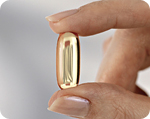Best November superfoods to prepare your body for winter
(NaturalNews) Well here we are again, preparing for the holidays and all those big meals, get-togethers, and parties that will kick off in earnest this Thanksgiving Thursday, the 22nd of November.In addition to the traditional Thanksgiving feast, there comes the Christmas dinner and more food and beverages at office parties and family get-togethers.This is a period of food and drink indulgences for many of us. But if you have any control over what's served, you can choose some actual superfoods that are also appropriate for the holiday season.Actually, most of the foods listed here are appropriate for Fall and Winter outside the holidays.
Winter holiday food focus
Cranberries and cranberry chutney or sauce with coconut sugar are perfect superfood side dishes for the holidays. Cranberries are known for their ability to combat urinary tract infections. But there's more. They are second to blueberries in antioxidant capacity.Cranberries contain vitamin C. They also contain phytonutrients that prevent pathogens from adhering to internal organs. There is ongoing research on potential anti-cancer attributes as well. Be generous with cranberry servings, but sweeten moderately with coconut sugar, honey, or maple syrup.Sweet potatoes are very high in beta-carotene and soluble fiber, the kind that creates a gentle intestinal gel and is unlikely to provoke an IBS (irritable bowel syndrome) episode. They qualify as a superfood because they're nutrient dense.Regardless of the name sweet potato, they also have a low glycemic index (GI), so you're safe from that glucose high and crash, and a small serving may not be harmful for most diabetes concerns. Yams also are part of the sweet potato family.They can be peeled, sliced, then boiled and mashed. Add butter, squeeze in half a lemon, and drizzle a little maple syrup. Top off with some pecan pieces. Absolute yum with high nutrition.Try mixing a lot of sauteed mushrooms and walnut pieces into your stuffing. Mushrooms are high in beta-glucan, another soluble fiber with powerful immune enhancing potential. Walnuts are one of the best sources of Omega-3.Holiday desserts could be topped off with lots of cinnamon, or place cinnamon sticks into hot chocolate or warm apple cider. Cinnamon has demonstrated anti-cancer properties and also helps maintain proper blood sugar levels.Consider adding ground cacao into some desserts or beverages. Cacao has the highest ORAC (oxygen radical absorbance capacity) of all foods, making it a killer antioxidant.Put a few dark or semi-sweet chocolates out for nibbles. The cacao content should be at least 70 percent to include antioxidant and heart health benefits. (http://www.naturalnews.com)Place them conspicuously with Brazil nuts, which are very high in selenium, a cancer preventative trace mineral. Nuts and chocolate are tasty together.Butternut squash is similar to pumpkin, but less unwieldy and more nutritious. It is appropriate for holiday servings, and it's also rich in phytonutrients, vitamin A, B vitamins, and minerals, especially potassium.You can prepare it pretty much like yams or sweet potatoes.
Winter superfoods not holiday specific
Apples should be consumed daily as snacks. They are highly nutritious and contain pectin, another soluble fiber containing beneficial polysaccharides. Eat the skins that contain most of the nutrition. Just make sure your apples are organic, as Big Ag apples are highly sprayed.Cabbage and cauliflower are cruciferous vegetables that help prevent cancer. Steam them lightly, add butter, lemon, and some crushed garlic. Leeks are tasty and similar nutritionally to onions, which are high in sulfur.Barley offers a good deal of immune boosting beta-glucans. Find recipes that include barley, organic of course. Quinoa is also a nutritious healthy grain alternative appropriate for winter recipes.Sources:http://www.huffingtonpost.comhttp://www.care2.com/greenliving/top-10-superfoods-for-winter.htmlhttp://www.steadyhealth.comhttp://www.lef.orghttp://www.nutrition-and-you.com/butternut-squash.htmlLearn more:
http://www.naturalnews.com/038053_superfoods_winter_holidays.html#ixzz2Cx1Qu0V3
HPV vaccine to be foisted on low-income girls in underdeveloped countries
(NaturalNews) The vaccine mafia is currently in the process of devising new ways to forcibly deliver the deadly human papillomavirus (HPV) vaccine Gardasil to low-income girls living in underdeveloped countries. Since the vaccine typically costs upwards of $400 for the full series of shots, it is simply unaffordable for the millions of young girls living in countries where an entire month's wages for the average family barely cover this amount. So groups like the Global Alliance for Vaccines and Immunizations (GAVI), a brainchild of the Bill & Melinda Gates Foundation, are now having to come up with creative subsidization programs to achieve their ultimate goal of vaccinating every child on the planet. Two recent studies, both of which were published in the open-access journal BMC Medicine, were designed to address this issue by explicitly examining the costs associated with delivering HPV vaccines to girls living in some of the poorest countries in the world. The impetus behind both studies, of course, was to figure out how an expensive vaccine with an extensive array of deadly side effects can be inexpensively introduced and distributed to girls whose families cannot afford it. And both studies found that bringing Gardasil to such girls will take an incredible amount of independent financial backing to ever come to fruition.The first study, which involved an international cohort of experts from across Europe and Africa, compared the costs of implementing a class-based vaccine delivery system versus an age-based delivery system, while the second study evaluated the expected costs of implementing a World Health Organization (WHO) cost planning program for low-income countries. But based on conclusive data gathered from both studies, it was discovered that the costs associated just with delivering Gardasil to young girls exceeds the total amount already being spent on existing routine vaccination programs in their entirety.
Two recent studies, both of which were published in the open-access journal BMC Medicine, were designed to address this issue by explicitly examining the costs associated with delivering HPV vaccines to girls living in some of the poorest countries in the world. The impetus behind both studies, of course, was to figure out how an expensive vaccine with an extensive array of deadly side effects can be inexpensively introduced and distributed to girls whose families cannot afford it. And both studies found that bringing Gardasil to such girls will take an incredible amount of independent financial backing to ever come to fruition.The first study, which involved an international cohort of experts from across Europe and Africa, compared the costs of implementing a class-based vaccine delivery system versus an age-based delivery system, while the second study evaluated the expected costs of implementing a World Health Organization (WHO) cost planning program for low-income countries. But based on conclusive data gathered from both studies, it was discovered that the costs associated just with delivering Gardasil to young girls exceeds the total amount already being spent on existing routine vaccination programs in their entirety.
Is eugenics the driving force behind the massive Gardasil push?
Because of this huge disparity, GAVI and other vaccine shill groups are quietly injecting significant amounts of subsidization capital to make sure as many girls as possible get vaccinated. And why are they doing this? They claim their efforts are driven by humanitarianism, as cervical cancer plagues many countries throughout Africa. But as we have pointed out on many previous occasions, Gardasil does not even prevent cervical cancer (http://www.naturalnews.com), at least not according to the science. The vaccine is also extremely deadly, carrying with it all sorts of serious side effects. (http://sanevax.org/)It was also recently reported in the open-access journal Pharmaceutical Regulatory Affairs that both Gardasil (Merck & Co.) and Cervarix (GlaxoSmithKline), the two HPV vaccines on the market today, leave genetic fingerprints in the brains of children that receive them. According to the data, components of the vaccine cross the blood-brain barrier and cause blood vessel inflammation in the brain, which can lead to autoimmune disorders like cerebral vasculitis as well as death. (http://www.naturalnews.com/037959_Gardasil_girls_death.html)Sources for this article include:http://www.eurekalert.org/pub_releases/2012-11/bc-n110912.phpLearn more:
http://www.naturalnews.com/037991_HPV_vaccine_low-income_girls_population_control.html#ixzz2CPwVNUqu
Heart disease danger: Vast majority of patients given wrong drug doses
(NaturalNews) Cardiology researchers at the Intermountain Medical Center Heart Institute say they've found startling evidence that millions of Americans with coronary artery disease are at increased risk for serious problems like uncontrolled bleeding or developing blood clots. The reason? The drugs they are taking as prescribed by their doctors are the wrong dose for their bodies. The new study, just released at the American Heart Association Scientific Sessions 2012 in Los Angeles, suggests that vast numbers (in all, about 75 percent) of heart disease patients taking two common blood-thinning drugs appear to be receiving the wrong dosage levels. So why is this a problem? Because at too small of a dose, the drugs don't prevent clots (and comes with side effects which can include stomach pain, nausea, vomiting, or diarrhea, vision changes and seizures). And at too high levels, the Big Pharma meds can cause life-threatening internal bleeding.The specific drugs in question are clopidogrel (Plavix) and prasugrel (Effient). Both are commonly prescribed by doctors to prevent harmful blood clots that can cause a stroke or heart attack. In fact, the current guidelines recommend that all patients should take the same standardized dose of one of these pills. But in their study of 521 patients, researchers at the Intermountain Medical Center Heart Institute found the one-size-fits-all dose is not only ineffective for huge numbers of patients, it may be dangerous.50 percent of the patients in the study taking clopidogrel were not getting enough of the drug to prevent clotting most effectively and a quarter were getting too much. Half of patients taking prasugrel were getting excessive amounts of the drug, which could lead to dangerous bleeding. Only a quarter of the patients taking either drug were receiving a correct dose."There's a sweet spot, an appropriate range for each patient. But we found that not many people are falling into that range," said cardiologist Brent Muhlestein, MD, a cardiac researcher at the Intermountain Medical Center Heart Institute, in a press statement. "We showed that by performing a simple blood test to see whether or not the blood is clotting properly, we can determine whether patients are getting an appropriate, individualized dose of the medications. The test is easy to perform, but not widely used."The Intermountain Medical Center Heart Institute study calls for personalized treatment for patients. The researchers say this could slash pharmacy bills for many patients who are being over-dosed with the powerful blood thinners. The annual cost for one of the medications is more than $1,800 and taking the lowest effective dose could conceivably cut their bill in half.Anyone concerned about strokes should be aware that there's a safe and natural way to lower your risk. As Natural News has previously reported, multiple studies have already shown a strong association between a high consumption of fruits and vegetables and a lower stroke risk. For example, research published in Stroke: Journal of the American Heart Association by Dutch scientists found frequently eating the white flesh of foods like pears and apples could lower the risk of stroke by 52 percent.Sources:http://intermountainhealthcare.org/about/news/Pages/home.aspxhttp://www.naturalnews.com/033616_stroke_risk_foods.htmlhttp://www.plavix.com/clopidogrel/side-effects-of-plavix.aspxAbout the author:Sherry Baker is a widely published writer whose work has appeared in Newsweek, Health, the Atlanta Journal and Constitution, Yoga Journal, Optometry, Atlanta, Arthritis Today, Natural Healing Newsletter, OMNI, UCLA's "Healthy Years" newsletter, Mount Sinai School of Medicine's "Focus on Health Aging" newsletter, the Cleveland Clinic's "Men's Health Advisor" newsletter and many others.
The new study, just released at the American Heart Association Scientific Sessions 2012 in Los Angeles, suggests that vast numbers (in all, about 75 percent) of heart disease patients taking two common blood-thinning drugs appear to be receiving the wrong dosage levels. So why is this a problem? Because at too small of a dose, the drugs don't prevent clots (and comes with side effects which can include stomach pain, nausea, vomiting, or diarrhea, vision changes and seizures). And at too high levels, the Big Pharma meds can cause life-threatening internal bleeding.The specific drugs in question are clopidogrel (Plavix) and prasugrel (Effient). Both are commonly prescribed by doctors to prevent harmful blood clots that can cause a stroke or heart attack. In fact, the current guidelines recommend that all patients should take the same standardized dose of one of these pills. But in their study of 521 patients, researchers at the Intermountain Medical Center Heart Institute found the one-size-fits-all dose is not only ineffective for huge numbers of patients, it may be dangerous.50 percent of the patients in the study taking clopidogrel were not getting enough of the drug to prevent clotting most effectively and a quarter were getting too much. Half of patients taking prasugrel were getting excessive amounts of the drug, which could lead to dangerous bleeding. Only a quarter of the patients taking either drug were receiving a correct dose."There's a sweet spot, an appropriate range for each patient. But we found that not many people are falling into that range," said cardiologist Brent Muhlestein, MD, a cardiac researcher at the Intermountain Medical Center Heart Institute, in a press statement. "We showed that by performing a simple blood test to see whether or not the blood is clotting properly, we can determine whether patients are getting an appropriate, individualized dose of the medications. The test is easy to perform, but not widely used."The Intermountain Medical Center Heart Institute study calls for personalized treatment for patients. The researchers say this could slash pharmacy bills for many patients who are being over-dosed with the powerful blood thinners. The annual cost for one of the medications is more than $1,800 and taking the lowest effective dose could conceivably cut their bill in half.Anyone concerned about strokes should be aware that there's a safe and natural way to lower your risk. As Natural News has previously reported, multiple studies have already shown a strong association between a high consumption of fruits and vegetables and a lower stroke risk. For example, research published in Stroke: Journal of the American Heart Association by Dutch scientists found frequently eating the white flesh of foods like pears and apples could lower the risk of stroke by 52 percent.Sources:http://intermountainhealthcare.org/about/news/Pages/home.aspxhttp://www.naturalnews.com/033616_stroke_risk_foods.htmlhttp://www.plavix.com/clopidogrel/side-effects-of-plavix.aspxAbout the author:Sherry Baker is a widely published writer whose work has appeared in Newsweek, Health, the Atlanta Journal and Constitution, Yoga Journal, Optometry, Atlanta, Arthritis Today, Natural Healing Newsletter, OMNI, UCLA's "Healthy Years" newsletter, Mount Sinai School of Medicine's "Focus on Health Aging" newsletter, the Cleveland Clinic's "Men's Health Advisor" newsletter and many others.Learn more:
http://www.naturalnews.com/037886_heart_drugs_side_effects_blood_clots.html#ixzz2Bezz1nAw
Making omega-3s work better
(NaturalNews) Omega-3 fats make for better bodies in many ways. They help protect heart, brain, joint, skin, immune, and vision health. However, omega-3s are highly fragile and need protection in their own right. Once oxidized, they're more harmful than helpful. Several nutrients protect omega-3s to help them work better.
Oxidation and inflammation
The aging process is largely about oxidation, which makes substances stick to blood vessels in atherosclerosis, promotes macular degeneration in the eye, weathers skin, and leads to dementia and depression. Oxidation also fuels inflammation, which essentially makes the body attack itself. Intact (non-oxidized) omega-3s are anti-inflammatory, and help reduce blood triglycerides, enable blood fat to flow more freely, improve LDL-cholesterol quality, stabilize plaque to prevent heart attack and stroke, help relax arteries, and reduce blood pressure. The eyes, skin, brain and most other body organs and tissues rely on intact omega-3s to function properly.A number of antioxidants can protect omega-3 fats and LDL-cholesterol from oxidation, including carotenoids, vitamin E, curcumin, capsaicin, quercetin, olive leaf extract, green tea, chitin-glucan fiber, and polyphenolic compounds from fruits and vegetables. Krill oil is an omega-3 that's naturally protected by the carotenoid astaxanthin.
Lutein and Zeaxanthin (LZ)
These carotenoids are particularly protective of omega-3s in the eyes, blood, brain, and skin. In mice fed high-fat diets, LZ lowered fat oxidation and arterial lesions dramatically. In humans, artery stiffness was 80 percent greater in people at the lowest versus highest blood LZ levels.The brain is composed largely of omega-3s. LZ comprises roughly 75 percent of all brain carotenoids, and is concentrated in regions involved in memory and learning. Higher LZ in the brain means better cognitive function, and cognitive impairment is linked to low blood zeaxanthin in the elderly. In a recent clinical trial, learning and memory were improved by omega-3 or LZ, but especially in combination.LZ are also the only carotenoids found in the retina and lens of the eye. They form the macular pigment, which acts like a pair of internal sunglasses to protect omega-3s in the retina from oxidation to help prevent macular degeneration.Skin is also subject to sun damage. Solar radiation and environmental pollutants oxidize fats, proteins and DNA, which leads to photoaging and cancer. Antioxidant treatment (i.e., ascorbic acid, tocopherol, alpha-lipoic acid, melatonin) is a promising approach to counteract photoaging skin. Carotenoids are also deposited in skin, where they protect against excessive sun exposure. Carotenoids like LZ, beta-carotene and lycopene work like internal sunscreen to help defend against sunburn. People with high vitamin D, lutein and total carotenoid intake show significantly reduced risk for melanoma. In one human clinical study, subjects receiving LZ showed enhanced elasticity, skin hydration, and sunburn protection. Carotenoids also show anti-cancer potential, in part because they support omega-3 anti-inflammatory activity. Total carotenoid intake is strongly associated with anti-aging, likely by protecting omega-3s.Thus, the best way to promote omega-3 benefits is to increase antioxidant intake, particularly carotenoids like LZ. Vitamin B6 also increases omega-3 content in membranes.Sources for this article include:J Gerontol A Biol Sci Med Sci 2007;62:308-16.Vascular Pharmacol 2009 SeptemberJ Nutr 2004;134:3225-32.J Nutr Health Aging. 2004;8:156-62.Arterioscler Thromb Vasc Biol 2004;24:313-9.AgroFood Hi-tech 2011;22:40-2.J Invest Dermatol 2003;121:399-405.Arterioscler Thromb Vasc Biol 1997;17:786-96.Nature Chem Biol 2010 MayFEBS J 2006;273:4528.Dis Markers 2008;24:341-9.Food Chem 2009;117:290-5.Circulation 2008;118:75-83.Nutr Neurosci 2008;11:75-83.FASEB J 2011;25:975.21.J Invest Dermatol 2004;122:510-7.Cancer Epidemiol Biomarkers Prev 2004;13:1042-51.Int J Cosmet Sci 2002;24:331-9.Am J Clin Nutr 2011;141:207-13.Cancer Metastasis Rev 2002;21:257-64.Skin Pharmacol Physiol 2007;20:199-210.Arch Biochem Biophys 2000;373:302-5.Am J Clin Nutr 2010;91:808-13.Wei Sheng Yan Jiu 2008;37:115-7.Atherosclerosis 2011;219:789-93.About the author:Dr. Phil Domenico is a nutritional scientist and educator with a research background in biochemistry and microbiology. Formerly an infectious disease research scientist, he now works as a consultant for supplement companies and the food industry.Learn more:
http://www.naturalnews.com/037824_omega-3s_inflammation_heart_health.html#ixzz2BJS4bbNb





